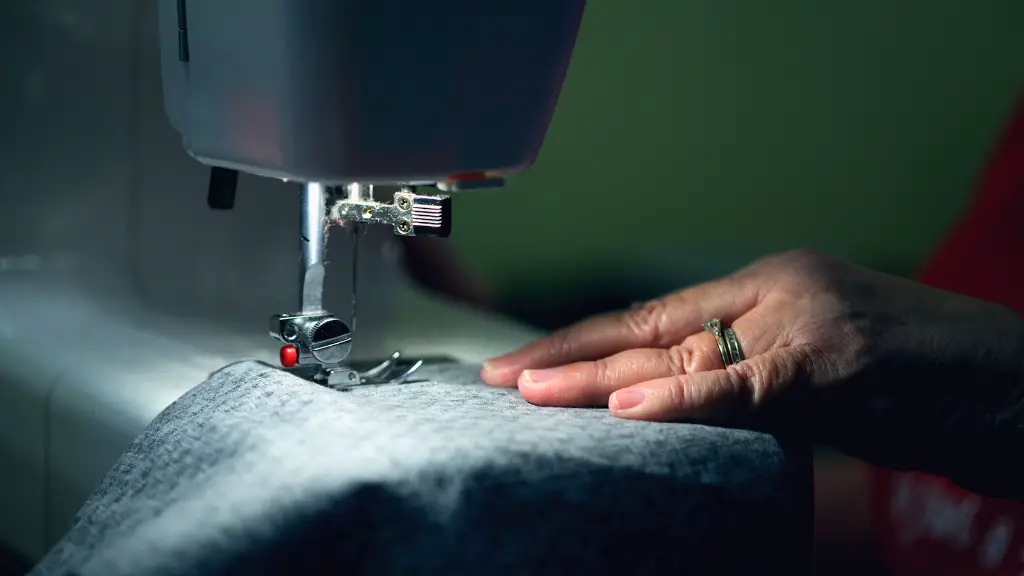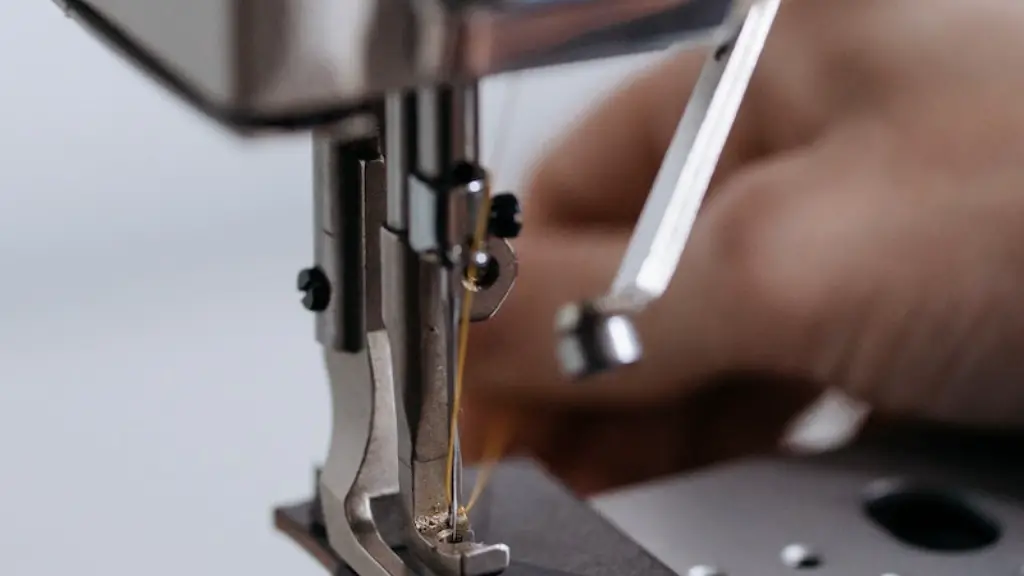1. DIY Building Process
Creating a sewing machine extension table is a relatively simple and inexpensive DIY project. To make one, the builder will need basic tools such as a drill and level, clamps, a jigsaw, screws, and glue. The first step is to measure and mark out the wood that will be used in the build. This allows the builder to make precise cuts and ensure that they are the same length, making it easier to assemble the table when finished.
Once the pieces are cut, the builder can start to construct the sewing machine table. The frame should be built first, with the sides attached to the top and the bottom. The bottom of the frame should be slotted over the base of the sewing machine, and the top should be bolted securely to the frame. Finally, the sides of the frame can be nailed or glued together, making sure that they are level with each other.
2. Attaching the Folding Table
The next step is to attach the folding table to the side of the main frame. This is a critical aspect of the build, as it adds the most stability and convenience to the overall product. Using clamps and a level, the builder will want to make sure that the folding table is in line with the main frame before drilling any screws or nails into the wood. Once the table is levelled, it can then be screwed to the side of the frame.
3. Making the Trays and Drawers
The third step is to make the trays and drawers. These can be made from a variety of materials. A popular choice for trays is plastic or pegboard, as these materials are easy to clean and are relatively inexpensive. Additionally, an adjustable dividers can be installed in the trays to make the most of the space- creating custom segments for fabric and thread.
The drawers should be fitted to the side of the frame near the bottom. This allows the user to access the materials stored in the drawers without having to reach over the sewing machine. The drawers should be built so that they slide in and out of the frame with ease.
4. Installing the Accessories
The final step is to install the necessary accessories. This includes needle holders, thread spools, and tool boxes. Installing these accessories properly is important, as it ensures that they will last longer, as well as providing a convenient work area and storage solution. All of the accessories should be fastened securely and firmly to the side of the frame.
5. Finishing Touches
Once the frame, trays, drawers and accessories have been installed, the builder can add a few finishing touches. This can include painting the frame, adding a dust cover over the sewing machine, and sanding down the edges of the drawers or trays. All of these little touches will make the table look more professional and will extend the life of the build.
6. Advantages of a Sewing Machine Extension Table
Having a sewing machine extension table makes sewing projects both easier and more enjoyable. With the additional table space, it is easier to keep fabrics, needles, and other supplies organized, making it easier to focus on the task at hand. The folding table provides extra surface area when needed, allowing more material to be manipulated at once. Additionally, the drawers and trays help to keep smaller items such as scissors, thread, and pins close at hand, eliminating unnecessary trips to the craft supply store.
7. Buying a Sewing Machine Extension Table
Not everyone has the time or resources to make their own sewing machine extension table. Therefore, there are many options to purchase one ready-made. Ready-made sewing machine extension tables come in a variety of sizes and styles, so it is important to shop around and find a table that is suitable for the user’s needs. There are affordable models that are made from MDF or plywood, or there are more expensive models made from hardwood, guaranteeing a longer lifespan.
8. Tips for Buying a Sewing Machine Extension Table
When shopping for a ready-made sewing machine extension table, it is important to pay attention to the specifications. The table should be fitted to the size of the sewing machine, allowing just a few centimetres of clearance between the frame and the machine. It is also important to ensure that the table has enough drawers and trays to hold all of the necessary supplies. Finally, the table should be fitted with locking wheels so that it can be moved around easily, as well as being able to lock into place when in use.
9. Advantages of an Electric Sewing Machine Extension Table
Electric sewing machine extension tables provide an even greater convenience and stability. These tables come with motors that allow the height of the table to be adjusted, making it easier to work with taller fabrics or items. Additionally, the motors provide a smoother experience when adjusting the height of the table. Finally, electric sewing machine extension tables also have adjustable lights and trays that allow for customization, making it easier for the user to find the materials they need.
10. Safety Considerations
When using a sewing machine extension table, it is important to take safety precautions. It is a good idea to position the table near a wall, so that it can be securely placed away from heat and light sources. Additionally, make sure that all of the screws, bolts, and nails are securely fastened, as loose parts can become a hazard. Finally, ensure that all of the materials and electrical cords are securely in place and away from the moving parts of the sewing machine.


